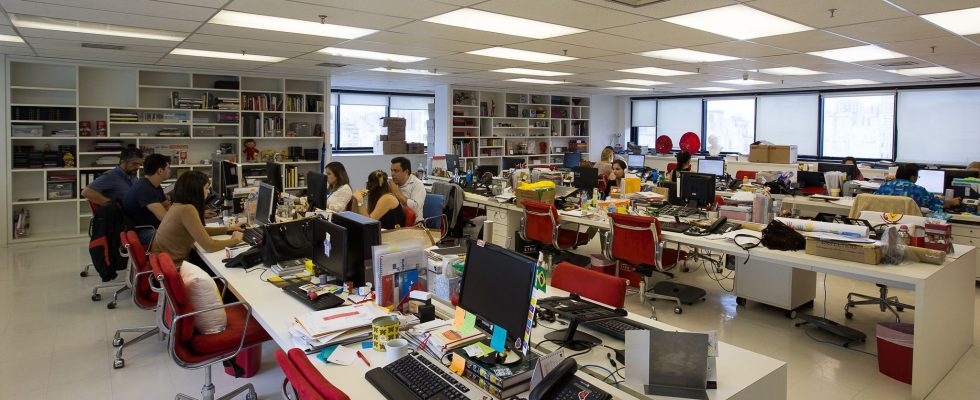It is a company which has achieved success thanks to the development of remote working, but which today wishes to bring its employees back to the office. Last August, the company Zoom, specializing in videoconferencing, asked its employees “living less than 80 kilometers” from the firm to favor hybrid work by “going on site at least twice a week”, the company then reported. BBCspecifying that 12% of employees carried out their activity completely remotely.
Recently, Amazon, Disney and even X (formerly Twitter) took similar resolutions across the Atlantic to encourage an end to full remote, an anglicism designating the possibility of unlimited teleworking, now considered unproductive for team collaboration. In France, on the contrary, the use of hybrid work – a configuration combining face-to-face and remote work – has stabilized over the past year.
It is also the European country where employees go to the office most often, according to a study carried out by the real estate consultancy firm JLL between October 2022 and 2023, among 29 companies and 30,000 employees. “In the world, we go to the office for an average of 3.1 days compared to 3.5 in France,” Flore Pradère, director of research in international labor dynamics at JLL, tells L’Express. “In the United States, we go back a little less, and in Asia a little more,” she summarizes.
“Best teamwork”
“This can be explained by cultural differences: in France, the office is considered a place for socializing and exchanging with colleagues,” notes Flore Pradère. “Coming to work allows you to remember your place and your existence within the company.” Face-to-face training is thus popular with younger employees, eager to learn from their peers, to acculturate themselves to the operations of their company and to build their network. “Added to this desire for integration is the fact of sometimes living in cramped accommodation, which does not always make remote working conditions ideal.”
However, this phenomenon is not only due to the will of employees: there is “a gap between the number of teleworking days desired by employees and the quota planned by employers”, declares Mathias Dolls, deputy director of ifo Center for Surveys and Research in Macroeconomics, which carried out a study in July 2023 on the average number of days teleworked in Europe. “In France, employees would like to work at home 1.4 days per week”, compared to less than one day teleworking on average.
Because on the side of managers, who must now manage teams remotely, “the challenge is to avoid the risk of dropping out within the group”, comments Flore Pradère. A reference model thus seems to emerge: in the Paris region for example, of 58% of office employees who practice teleworking, most work remotely for 1 to 3 days, according to another study conducted by the JLL firm regarding employee mobility.
Share space
But to bring employees back to the office, you still need to have the capacity to welcome them. Distancing has in fact led to a reduction in the budget allocated to real estate and the square footage of offices, in an uncertain economic context for businesses. In the Paris region, the sale of offices fell by 22% year-on-year in the first half of 2023.
“The flex office [le fait de ne pas avoir de bureau attitré] has become the norm in open spaces. On average, two employees share an office,” explains JLL. Returning, but not all at the same time, and trying to distribute the teams over the different days of the week. “Some companies, for example, set up events on Friday, a less busy day, to encourage people to come to the office”, quotes Flore Pradère.
The uses of professional space are also evolving. If the office is considered a place conducive to socializing, in a context of increasing distancing, more and more employees say they suffer from concentration problems, no longer able to tolerate noise when they return to their workstation. “The demands for workspaces designed to allow one to isolate themselves when necessary are strong. We are in the process of redefining the relationship with the workspace.”
